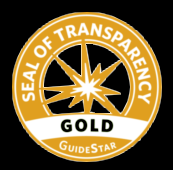 The Georgia Department of Agriculture Equine Division was called out to a farm where they found approximately 80 horses on 150 acres of land. The local Sheriff’s office was also involved. The gentleman who owned the horses also had 50 head of cattle on his property. They were in an area of the state that was suffering from the drought and the owner had no horse quality hay to replace the grass, leaving many of the horses very thin. He was told by the State and County that he had to disperse the herd and he was agreeable to do that. Hence, my association with him. What I gathered from my conversation with him is that he was a backyard breeder of Arabian horses for many years, boasting at times of their bloodline and their value “back in the day”. Of course, he had no real breeding program; the stallions and mares ran together, producing an annual supply of offspring year after year.
The Georgia Department of Agriculture Equine Division was called out to a farm where they found approximately 80 horses on 150 acres of land. The local Sheriff’s office was also involved. The gentleman who owned the horses also had 50 head of cattle on his property. They were in an area of the state that was suffering from the drought and the owner had no horse quality hay to replace the grass, leaving many of the horses very thin. He was told by the State and County that he had to disperse the herd and he was agreeable to do that. Hence, my association with him. What I gathered from my conversation with him is that he was a backyard breeder of Arabian horses for many years, boasting at times of their bloodline and their value “back in the day”. Of course, he had no real breeding program; the stallions and mares ran together, producing an annual supply of offspring year after year.
He and I had several phone conversations during the following weeks, and he mentioned to me that he had a livestock hauler that he was going to call to take the horses. I offered to help with a large herd dispersal from his property in lieu of that, but he declined. All the horses were feral and untouchable and there were many mammas and babies in the herd, as well as large supply of stallions. He did agree to let me have 5 of the babies. I knew that there was another Rescue was involved and he was allowing them to take a few, as well.
He called me on a Friday afternoon and said I needed to come right away because they were loading horses. My sidekick and “go to person”, Rylee Nash, and I went over there the next morning. GERL Secretary, Cynthia Anderson, met us there with her horse trailer as a back-up. Most all the big horses were gone when we arrived. The babies and younger horses had been sectioned off on a 5-acre pasture with a catch pen. We picked out a few babies, along with 3 of the thinnest horses, which ended up being 6 instead of 5. We were able to run 4 of them onto my trailer which was backed up to the gate of the catch pen. Cynthia’s trailer was loaded with the other 2 babies and off we drove, headed to Bethlehem. There were 4 or 5 other trucks/trailers that arrived as we were leaving that were also picking up horses. I am grateful that he allowed us to come and get a few that will have a better life. He certainly didn’t have to do that. I’m guessing that twenty to twenty-five horses were rescued that day.
 The “Six Amigos” are currently being rehabilitated with good grain three times a day, alfalfa hay and a round bale of Bermuda at their disposal to get to a healthier weight. Five of the six are stallions that will require castration. They are becoming more trusting with this regimen and diet. Of course, they remain in quarantine until blood can be pulled for Coggins. Afterwards, they will go in pairs to separate foster homes where they will hopefully, become trusting partners.
The “Six Amigos” are currently being rehabilitated with good grain three times a day, alfalfa hay and a round bale of Bermuda at their disposal to get to a healthier weight. Five of the six are stallions that will require castration. They are becoming more trusting with this regimen and diet. Of course, they remain in quarantine until blood can be pulled for Coggins. Afterwards, they will go in pairs to separate foster homes where they will hopefully, become trusting partners.
There are many large herd situations just like this one, all over our state. GERL has had some experience in the past with large herd/hoarding situations. What we learned is that the owners always have a need to be in control of the entire dispersal, making it impossible to accomplish much of anything. The fact that their horses are always feral makes the situation very dangerous to handlers. This brings me to a dilemma: What do we want GERL’s role to be in these types of cases going forward? There is no clear answer at this time, but I suspect we’ll do what we always do…take each situation as they come and cross that bridge when we come to it!
